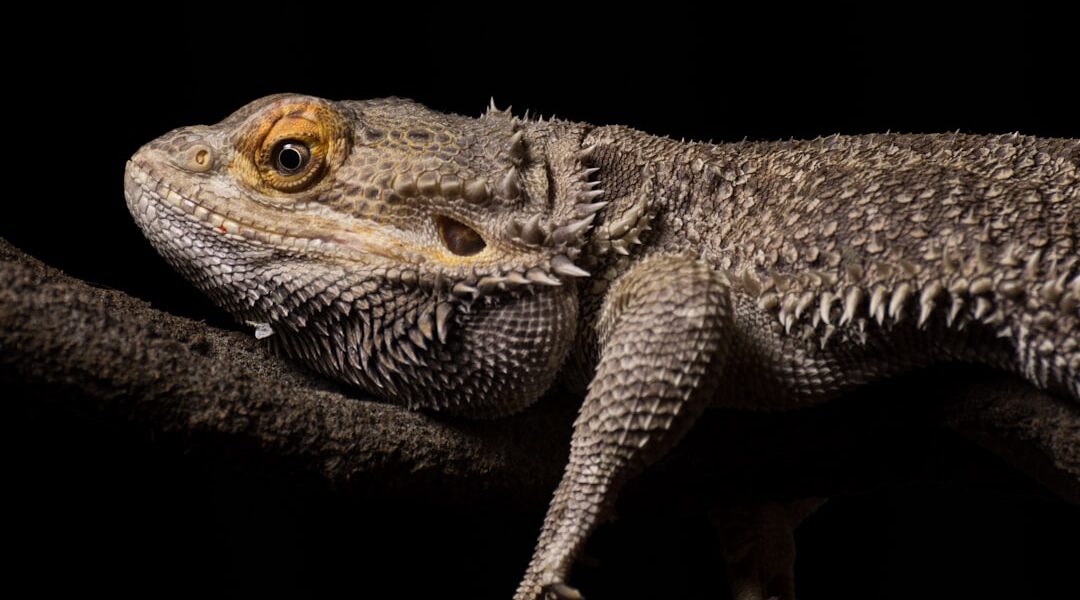The Indian Rock Python, scientifically known as Python molurus, is a large, non-venomous constrictor species native to the Indian subcontinent and parts of Southeast Asia. It is one of the largest snake species globally, with adults typically reaching lengths of 3 to 4 meters (10 to 13 feet), though exceptional specimens may grow up to 6 meters (20 feet). The snake’s coloration varies, usually featuring a pattern of dark, irregular blotches on a lighter background, which can range from yellowish to brown or gray.
Indian Rock Pythons are highly adaptable and inhabit a variety of ecosystems, including forests, grasslands, marshes, and rocky areas. They can also be found in agricultural lands and on the outskirts of urban areas. These pythons are primarily terrestrial but are capable swimmers and can climb trees.
Their diet consists mainly of small to medium-sized mammals and birds, which they kill by constriction before swallowing whole. As members of the Pythonidae family, Indian Rock Pythons share characteristics with other large constrictors such as the Burmese Python (Python bivittatus) and the Reticulated Python (Malayopython reticulatus). While generally docile, they may defend themselves if threatened.
In recent years, the species has faced challenges due to habitat loss, human-wildlife conflict, and illegal collection for the pet trade. Conservation efforts are ongoing to protect these snakes in their natural habitats and maintain stable populations. It is important to note that the term “Banana Python” is not a standard or scientific name for this species.
The Indian Rock Python’s appearance does not typically resemble a banana, and this nickname is not commonly used in scientific or conservation contexts.
Key Takeaways
- The Banana Python is a non-venomous snake species found in the rainforests of West Africa.
- They are excellent climbers and spend most of their time in trees, preying on small mammals and birds.
- Banana Pythons are ambush predators, using their strong bodies to constrict and suffocate their prey before swallowing them whole.
- Female Banana Pythons lay eggs and care for their young until they are able to fend for themselves.
- Due to habitat loss and overhunting for their skin and meat, the Banana Python is listed as a vulnerable species, and conservation efforts are underway to protect them.
Habitat and Behavior of the Banana Python
Habitat and Distribution
They are commonly found in tropical and subtropical forests, as well as grasslands, swamps, and marshes. These snakes are also known to inhabit agricultural areas and even urban environments, where they can often be found near human settlements.
Behavior and Lifestyle
Despite their ability to thrive in diverse habitats, Banana Pythons are most commonly associated with rocky outcrops and hillsides, where they can find shelter in crevices and caves. In terms of behavior, Banana Pythons are primarily nocturnal hunters, meaning they are most active at night. During the day, they can often be found basking in the sun to regulate their body temperature.
Hunting and Feeding Habits
These snakes are solitary creatures and are typically only seen together during the breeding season or when sharing a common basking spot. When hunting, Banana Pythons use their keen sense of smell to locate prey, which includes small mammals, birds, and reptiles. They are ambush predators, lying in wait for their prey to come within striking distance before launching a swift attack. Once they have captured their prey, they use their powerful coils to constrict it until it suffocates, before swallowing it whole.
Diet and Feeding Habits of the Banana Python

Banana Pythons are carnivorous snakes with a diverse diet that includes a variety of small mammals, birds, and reptiles. They are opportunistic hunters and will consume almost any animal that they can overpower and swallow whole. Their diet may include rodents such as rats and mice, as well as birds, lizards, and even other snakes.
In some cases, they have been known to prey on larger animals such as deer and wild boar. Their ability to consume such large meals is made possible by their incredibly flexible jaws, which allow them to stretch their mouths wide enough to swallow prey much larger than their own head. Feeding habits of the Banana Python are characterized by their patient and stealthy hunting techniques.
These snakes rely on their excellent camouflage and stealth to approach their prey undetected before striking with lightning speed. Once they have captured their prey, they use their powerful coils to constrict it until it suffocates, before swallowing it whole. After consuming a large meal, Banana Pythons may go for weeks or even months without needing to eat again, depending on the size of their meal.
This ability to survive on infrequent meals has contributed to their success as a species in a variety of habitats.
Reproduction and Life Cycle of the Banana Python
| Reproduction and Life Cycle of the Banana Python | |
|---|---|
| Gestation Period | Approximately 6-7 months |
| Clutch Size | Average of 20-30 eggs |
| Incubation Period | Around 60-70 days |
| Sexual Maturity | 3-4 years |
| Life Span | Average of 20-30 years |
The reproductive cycle of the Banana Python is a fascinating aspect of their biology. These snakes are oviparous, meaning they lay eggs rather than giving birth to live young. The breeding season for Banana Pythons typically occurs during the cooler months of the year, when temperatures are more conducive to egg development.
During this time, male snakes will engage in combat rituals to compete for mating opportunities with females. Once a female has been successfully courted by a male, she will lay a clutch of eggs in a warm, sheltered location such as a burrow or hollow tree. The female will then coil around her eggs to provide warmth and protection until they hatch, which typically takes around two to three months.
Once the eggs hatch, the young snakes are fully independent and must fend for themselves from the moment they emerge from their eggs. They are born with all the instincts and abilities they need to survive in the wild, including hunting and self-defense skills. As they grow, young Banana Pythons will shed their skin regularly to accommodate their increasing size.
With proper care and favorable environmental conditions, these snakes can live for several decades in captivity.
Conservation Status and Threats to the Banana Python
The conservation status of the Banana Python is a topic of concern due to various threats facing this species in the wild. One of the primary threats to their survival is habitat loss and fragmentation caused by human activities such as deforestation and urbanization. As their natural habitats continue to shrink, Banana Pythons are increasingly coming into contact with humans, leading to conflicts that often result in the snakes being killed out of fear or misunderstanding.
Additionally, these snakes are often targeted by poachers for their beautiful skins and for the exotic pet trade. In some areas, overhunting for their meat and traditional medicinal purposes has also contributed to population declines. Despite being protected by law in many countries, enforcement of these protections can be challenging due to limited resources and competing priorities.
As a result, populations of Banana Pythons have declined in many parts of their range, leading to concerns about their long-term survival. Efforts are being made by conservation organizations and government agencies to study and protect these snakes through habitat conservation, education programs, and enforcement of wildlife protection laws.
Interactions with Humans and Mythology Surrounding the Banana Python

Cultural Significance of Banana Pythons
Throughout history, humans have had a complex relationship with Banana Pythons, with these snakes being both feared and revered in different cultures. In some societies, they are seen as symbols of power and fertility, while in others they are feared as dangerous predators. In Hindu mythology, the snake is revered as a symbol of fertility and rebirth, with several deities depicted with serpents coiled around them.
Fear and Misconceptions
However, in many Western cultures, snakes are often associated with fear and danger due to their potential to inflict harm. In reality, interactions between humans and Banana Pythons are relatively rare, as these snakes are generally shy and non-aggressive unless provoked. However, conflicts do occur when these snakes come into contact with human settlements or agricultural areas.
Coexistence and Conservation Efforts
In some cases, these conflicts have resulted in human injuries or fatalities, leading to negative perceptions of these snakes. Efforts to educate the public about the importance of conserving these snakes and promoting coexistence with them are ongoing in many regions where they are found.
Efforts to Study and Protect the Banana Python
Efforts to study and protect the Banana Python are crucial for ensuring the long-term survival of this species in the wild. Research on their behavior, ecology, and population dynamics is essential for developing effective conservation strategies. This includes studying their habitat requirements, movement patterns, and reproductive biology to identify key areas for protection and management.
Additionally, efforts to mitigate human-snake conflicts through education programs and community engagement are important for promoting coexistence between humans and these snakes. Conservation efforts also include habitat restoration and protection initiatives aimed at preserving critical habitats for Banana Pythons and other wildlife species. This may involve creating protected areas such as national parks or wildlife reserves where these snakes can thrive without human interference.
Enforcement of wildlife protection laws is also crucial for preventing illegal hunting and trade of these snakes. By working together with local communities, government agencies, and conservation organizations, it is possible to ensure a future where Banana Pythons continue to play an important role in their ecosystems. In conclusion, the Banana Python is a remarkable species with a rich natural history that has captivated humans for centuries.
Their unique appearance, behavior, and ecological importance make them an important focus for conservation efforts aimed at preserving biodiversity in their native range. By studying these snakes and working towards their protection, we can ensure that future generations have the opportunity to appreciate these magnificent creatures in the wild where they belong.
If you’re interested in learning more about the impact of python on data analysis and visualization, check out this article on metricsgoddess.com. It provides valuable insights into how python is revolutionizing the way data is analyzed and visualized, making it an essential tool for anyone working in the field of data science.
FAQs
What is a banana python?
A banana python is a color morph of the ball python (Python regius) that displays bright yellow and orange hues, resembling the colors of a ripe banana.
Are banana pythons a separate species?
No, banana pythons are not a separate species. They are a selectively bred color morph of the ball python, which is a non-venomous constrictor snake native to West and Central Africa.
How are banana pythons different from regular ball pythons?
Banana pythons have a distinct coloration with bright yellow and orange hues, while regular ball pythons have a more typical brown and black coloration. Otherwise, they share the same physical characteristics and care requirements.
Are banana pythons suitable as pets?
Yes, banana pythons make excellent pets for reptile enthusiasts. They are generally docile, easy to handle, and have relatively low maintenance requirements.
What do banana pythons eat?
Like all ball pythons, banana pythons are carnivorous and primarily eat small mammals such as mice and rats. They are also known to eat birds and occasionally reptiles in the wild.
How big do banana pythons get?
Banana pythons, like all ball pythons, are relatively small compared to other python species. They typically grow to be around 3 to 5 feet in length, although some individuals may reach up to 6 feet.
Do banana pythons require any special care?
Banana pythons have the same care requirements as regular ball pythons. They need a secure enclosure with proper heating and humidity levels, a suitable substrate, and a consistent feeding schedule. Regular handling and veterinary check-ups are also important for their well-being.




